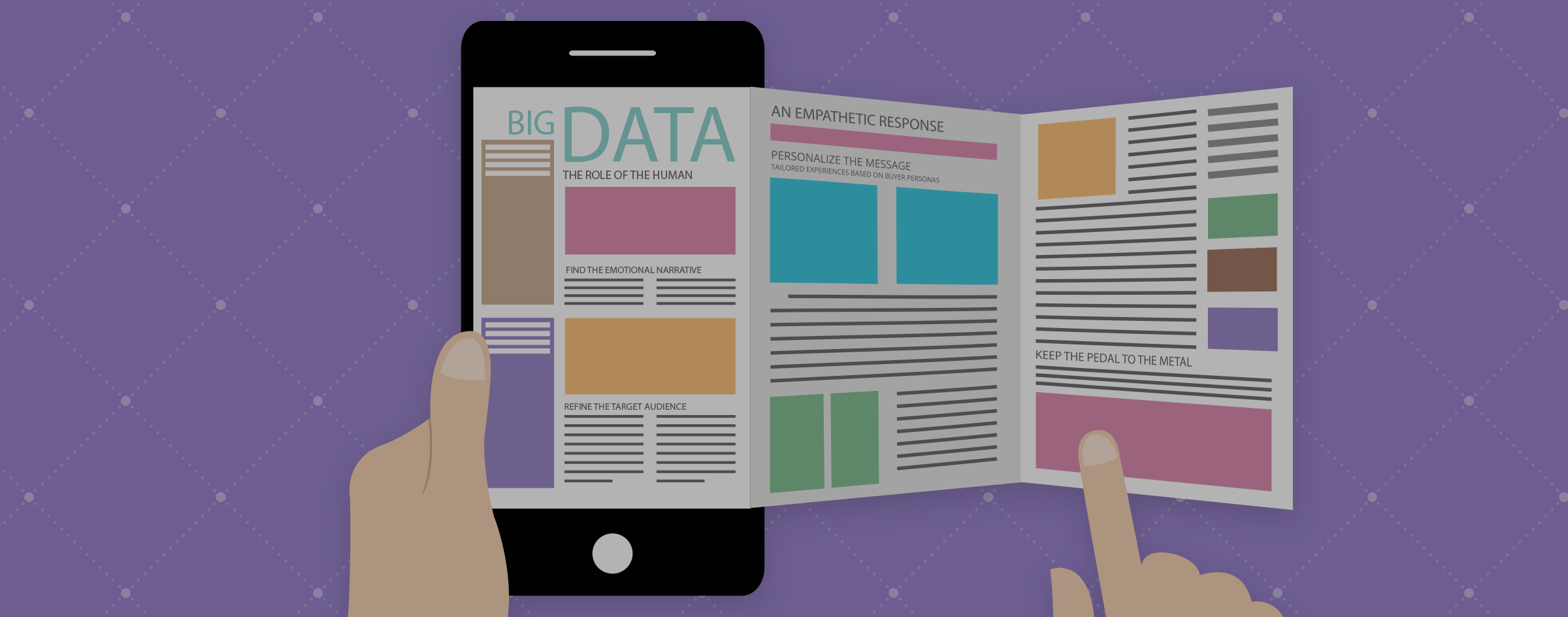The proliferation of Big Data has given marketers a wellspring of information from which to understand the wants and needs of their target audience and, consequently, develop stronger, more informed programs. As Dave O'Flanagan, CEO of Boxever, notes in MarketingProfs.com, “…as Big Data technologies evolve, brands can get to know customers on a personal level. The data gives brands the opportunity to create more memorable, personal interactions (reminiscent of the small-town shopkeeper scenario), become a customer's companion, and improve customer experience.”
Here’s the rub, though: “While it is tempting to think that…the ‘data will speak for itself’ the reality is that this falls a long way short of what marketers need from Big Data,” says Colin Strong, a UK-based consumer researcher, in CMO Magazine, adding, “it is time for brands to start rethinking how they approach big data by recognising the role of the human at its heart.”
“People hear statistics, but they feel stories,” writes Forbes contributor Brent Dykes. “Throughout time, storytelling has proven to be a powerful delivery mechanism for sharing insights and ideas in a way that is memorable, persuasive, and engaging.”
With this in mind, here are four steps that can help today’s marketers to produce killer strategies by mining the personal stories waiting in your organization’s treasure trove of data.
Step One: Find the Emotional Narrative
“Emotion,” says Dykes, citing research conducted in 2009 by USC professor Antonio Damasio, “actually plays an essential role in helping our brains to navigate the alternatives and arrive at a timely decision.” Humanizing the data elicits an empathetic response; it’s what gets you through a customer’s front door. So it’s critical to mine stories that go beyond cold numbers.”
Step Two: Refine the Target Audience
“As Big Data technologies evolve, brands can get to know customers on a personal level,” notes Dave O'Flanagan, CEO of Boxever, writing on MarketingProf.com. “Personalization means more than simply knowing customers' names; it's also about anticipating their needs. It means knowing things like preferences, availability, and location, and using this information to make targeted recommendations, That's true personalization.”
Step Three: Personalize the Message
Just as we can use Big Data to micro-segment the audience, so too what (and how) we communicate to them. Which means we can create personalized campaigns for each that goes beyond the superficial. In the case of a disaster relief marketing effort, for example, we can target those who’ve donated in the past by playing on their altruism. For those who’ve rented Annie in the last six months, we might appeal to their empathy toward orphaned children. What’s more, using insights into how they like to be engaged can help us figure the best way to reach out, be it email, phone, text, social media, etc. Notes O’Flanagan, “There are so many buyer personas and preferences, but understanding how to tailor these experiences based on those multiple preferences at any point in time is what's ensuring repeat purchases, brand evangelism, and a growing marketing footprint.”
Step Four: Keep the Pedal to the Metal
In order to build loyalty and trust, communications can’t stop. We can deepen the relationship with those we reached out to by further personalizing communications with topics and messages we know, through crunching Big Data, they’ll appreciate. We can also work to make them part of the narrative, possibly recruiting them as a spokesperson to tell their own story (“We donated and now volunteer for a week in Haiti.”) In other words, make them brand/product/company evangelists.
One final benefit: the most financially compelling stories can perform double duty — they can be re-purposed to illustrate the power and potential of the strategy to the leaders in your organization that hold the purse strings.


